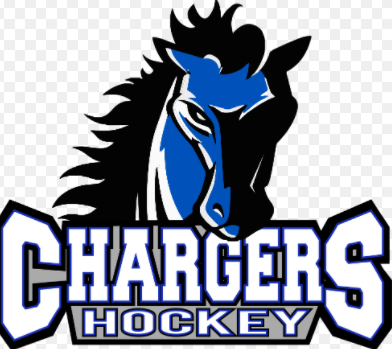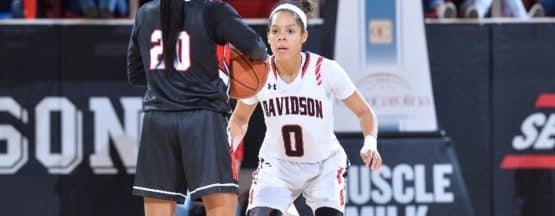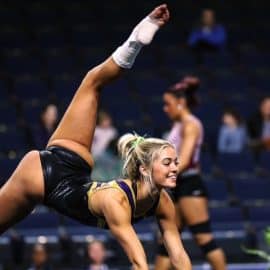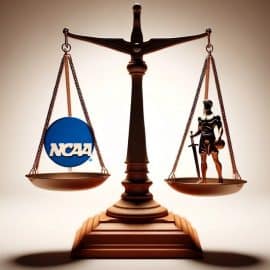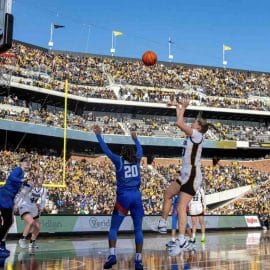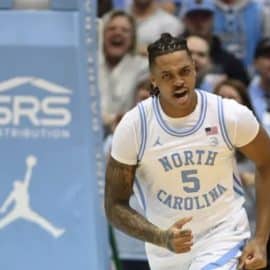From time-to-time, I’ve had guest writers contribute to the site. This week, Brian Helland weighs in with his experience while attending a University of Alabama-Huntsville hockey game last February.
Without further ado.
On the last weekend of February, 2018, I took advantage of a gap in the UND men’s hockey schedule to travel down to Huntsville, AL to take in a two-game series between the Alabama-Huntsville Chargers and the Bowling Green Falcons. UAH is the program that was almost axed a few years ago, but was resurrected with the help of private donors. I went to the Hockey Capital of Alabama to check out one of the smaller and least known programs in NCAA hockey.
I arrived in Huntsville on Thursday, February 22nd, 2018. Huntsville has a population of a little less than 200,000. The metro area numbers 455,458 (118th largest in the United States). The airport was very modern and nice. The people were very friendly and helpful. I had a nice conversation with the lady at the rental car counter and when she asked what brought me to Huntsville, I explained to her what I was doing. She said she loved hockey and went to a lot of Huntsville Havoc games. I thought to myself “Huntsville Havoc”? What team is that? That is what tipped me off on just how obscure UAH hockey was in its own hometown.
For the record, the Huntsville Havoc are members of the Southern Professional Hockey League (SPHL). There are 10 teams: Huntsville Havoc, Birmingham Bulls, Evansville Thunderbolts, Fayetteville Marksmen, Knoxville Ice Bears, Macon Mayhem, Pensacola Ice Flyers, Peoria Rivermen, Quad City Storm and Roanoke Rail Yard Dawgs. The SPHL is a developmental league that sends players to the “…ECHL, CHL or other ‘AA’ level (or higher) league…”. It is good to see some form of minor league professional hockey in the Deep South. It is not good that UAH hockey is invisible in the community within it resides.
The Chargers, like the Havoc, play their home games in the 6,600 seat Von Braun Center, named after legendary German rocket scientist Dr. Wernher von Braun, who was instrumental in the development of America’s space program in the 1950’s and 60’s. The name is a nod to Huntsville’s U.S. Space & Rocket Center, which features the Saturn V rocket and other space travel artifacts.
The arena seats 533 more people than the Old Ralph Engelstad Arena in Grand Forks, but the design is a little different. The ends feature no seating and the concourse does not go all the way around the arena. To my right, on the wall at the end of the arena, were the Division II title banners the Chargers won in the 1990’s. To my left, up in the rafters, was the 2009-10 SPHL Championship Banner won by the Havoc. The concession offered a nice selection of food and beverages, better than what I expected.
The fan base for this program is, well, to put it charitably, sparse. What little student section there is (made up mostly of the band) was very loud and active. Very few people from the community were there for either game. The fan promotions were like the promotions UND used to do in the 1990’s in the Old Ralph Engelstad Arena (the Chicken Dance for instance).
The games themselves were entertaining, if not featuring the best talent in the country. The Chargers rallied from a 2-1 deficit in the third period on Friday to take a 3-2 home win, clinching a berth in the WCHA playoffs. The Falcons rallied on Saturday for a 3-0 road win. UAH went on to lose their first-round playoff series on the road at Northern Michigan 2-1 (1-7, 3-2, 2-5).
My impression of this program that narrowly avoided contraction a few years ago is that it has a lot of untapped potential. With more fundraising, more marketing and more of a commitment to put a winning product on the ice, UAH hockey could become a big revenue stream for the entire athletic department and campus. Hiring the right coach who can sell the program to recruits and find those hidden gems would go a long way to driving up fan interest, excitement, and expectations.
So why care about the UAHs of the world? Because college hockey has 60 teams total. It is crucial that programs like UAH, Arizona State, and Bowling Green can survive and be sustainable in the long-run. Otherwise, we risk losing the 16 team tournament that has served us so well. Not to mention our reputation as a developer of future professionals.
Add The Sports Daily to your Google News Feed!
